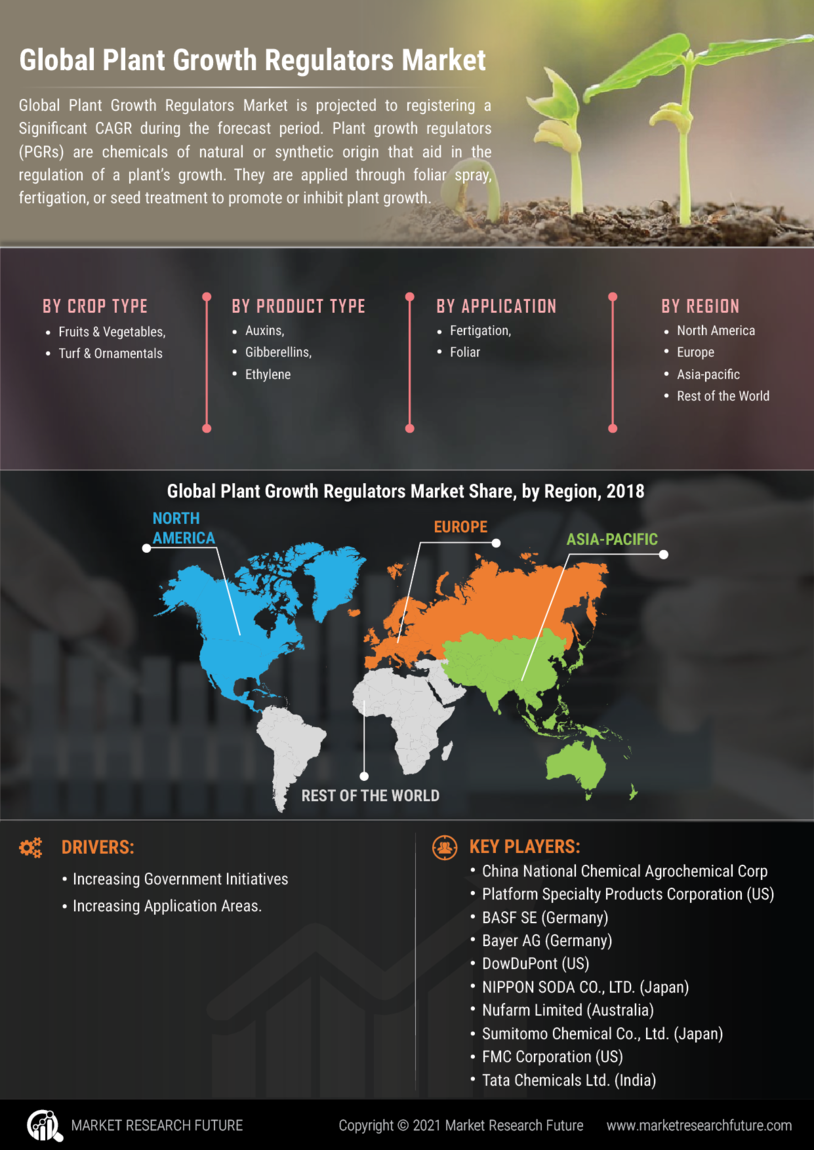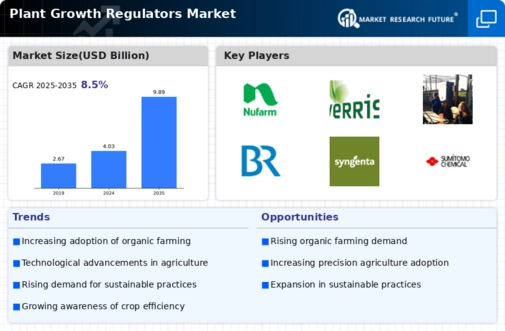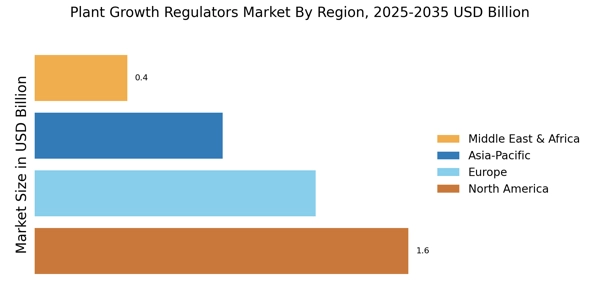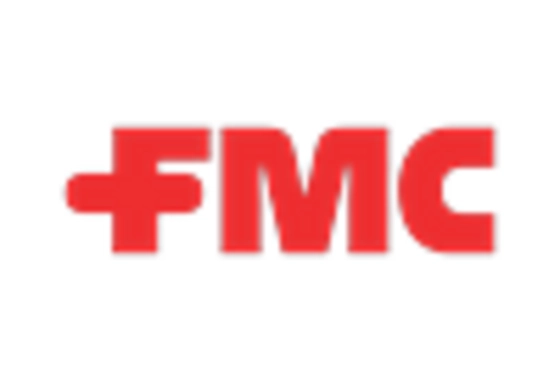Increased Crop Production Needs
The escalating need for increased crop production is a significant driver in the Plant Growth Regulators Market. With the global population projected to reach nearly 9 billion by 2050, the demand for food is expected to rise dramatically. This necessitates innovative agricultural solutions to enhance crop yields and ensure food security. Plant growth regulators are essential tools in achieving these goals, as they can improve plant growth, increase resistance to pests and diseases, and optimize resource use. As agricultural stakeholders strive to meet these production challenges, the Plant Growth Regulators Market is likely to expand in response to these pressing needs.
Rising Demand for Organic Produce
The increasing consumer preference for organic produce is a notable driver in the Plant Growth Regulators Market. As consumers become more health-conscious, the demand for organic fruits and vegetables has surged. This trend compels farmers to adopt sustainable agricultural practices, which often include the use of plant growth regulators to enhance crop yield and quality. According to recent data, the organic food market is projected to grow at a compound annual growth rate of over 10% in the coming years. Consequently, the Plant Growth Regulators Market is likely to experience a parallel increase as farmers seek effective solutions to meet this rising demand.
Technological Innovations in Agriculture
Technological advancements in agriculture are significantly influencing the Plant Growth Regulators Market. Innovations such as precision agriculture, biotechnology, and data analytics are enabling farmers to optimize their crop management practices. These technologies facilitate the targeted application of plant growth regulators, enhancing their effectiveness and reducing waste. For instance, the integration of drones and satellite imagery allows for precise monitoring of crop health, leading to more informed decisions regarding the application of growth regulators. This trend is expected to propel the Plant Growth Regulators Market forward, as more farmers adopt these technologies to improve productivity and sustainability.
Growing Awareness of Sustainable Farming Practices
The growing awareness of sustainable farming practices is shaping the Plant Growth Regulators Market. As environmental concerns rise, farmers are increasingly seeking methods that minimize ecological impact while maximizing crop yield. Plant growth regulators play a vital role in this transition, as they can enhance plant growth and resilience without the need for excessive chemical inputs. This shift towards sustainability is reflected in market trends, with a notable increase in the adoption of eco-friendly growth regulators. As consumers and regulatory bodies push for more sustainable practices, the Plant Growth Regulators Market is poised for growth.
Government Initiatives Supporting Agricultural Productivity
Government initiatives aimed at enhancing agricultural productivity are a crucial driver in the Plant Growth Regulators Market. Various countries are implementing policies and providing financial incentives to promote the use of plant growth regulators among farmers. These initiatives often focus on increasing crop yields, improving food security, and promoting sustainable farming practices. For example, subsidies for the purchase of growth regulators or funding for research into their efficacy can stimulate market growth. As governments recognize the importance of agricultural innovation, the Plant Growth Regulators Market is likely to benefit from increased support and investment.


















Leave a Comment